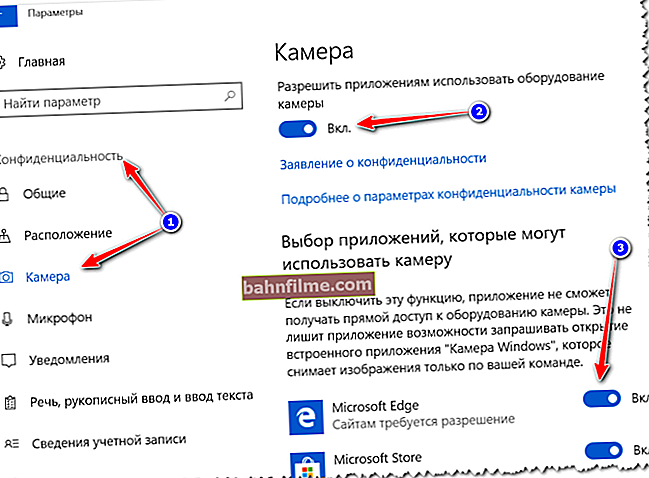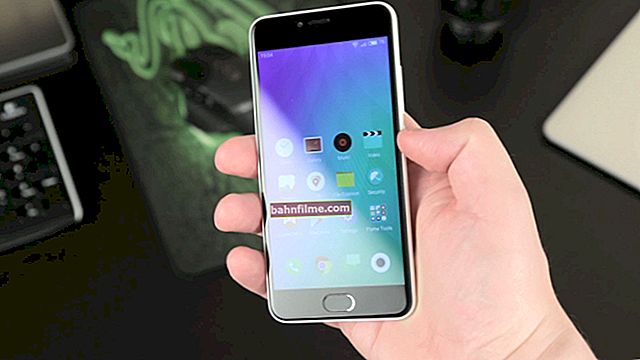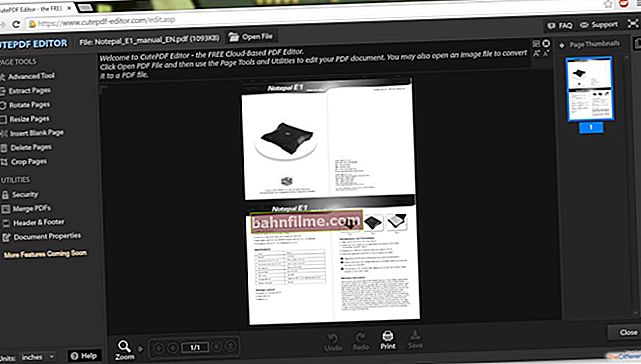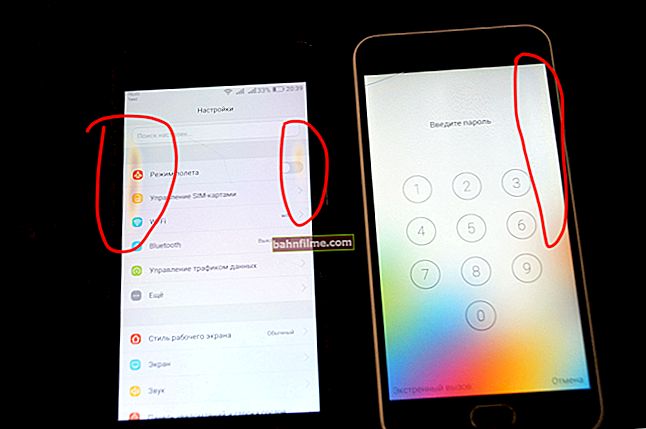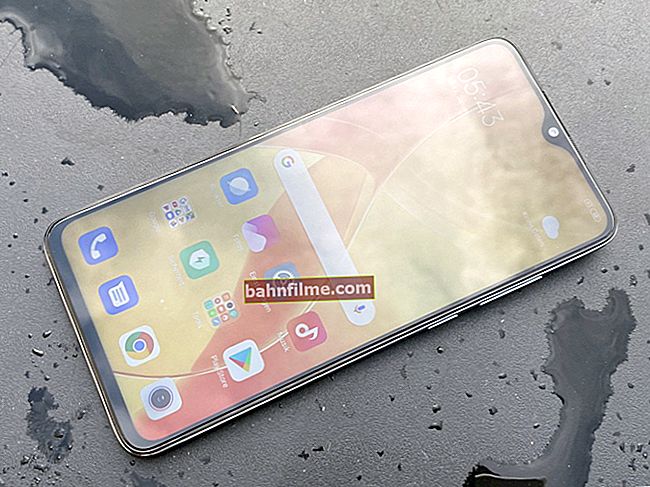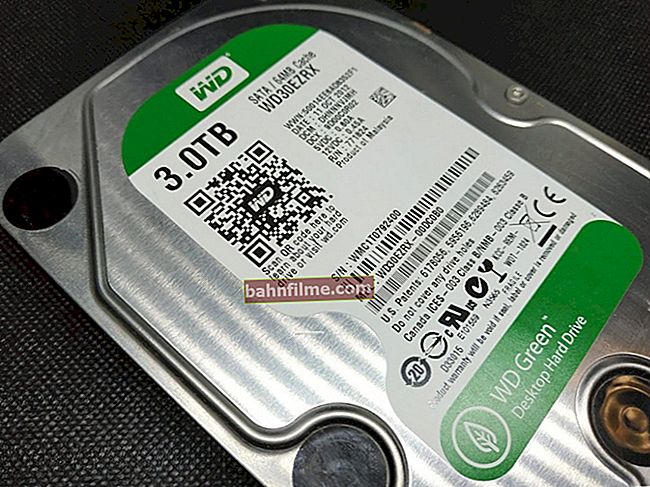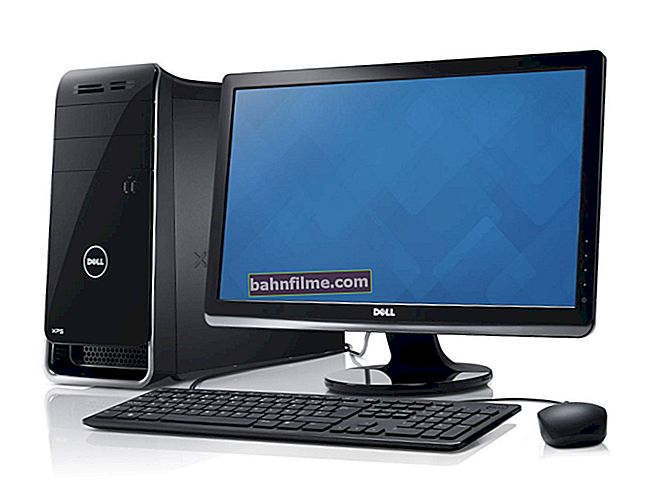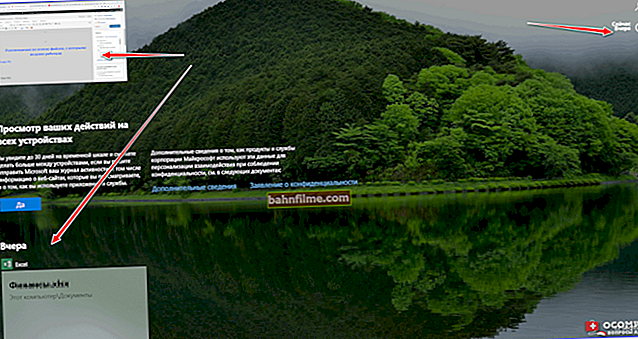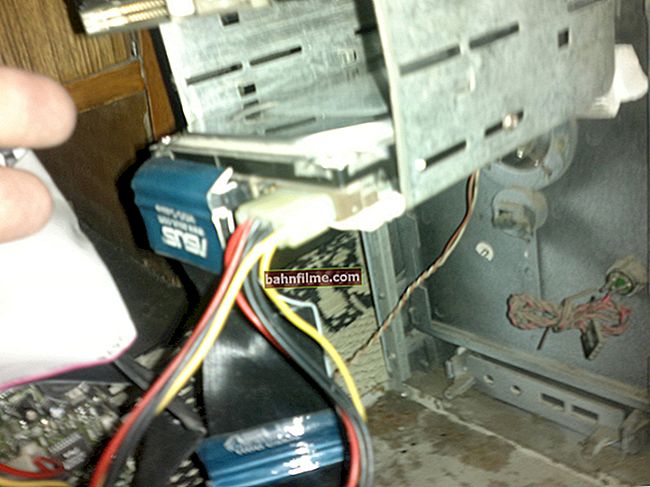 Good time!
Good time!
Many users do not even suspect that there are not one or two versions of the Bluetooth protocol, and the capabilities of a particular device depend on it quite significantly.
For example, to transfer files via Bluetooth, you must have an adapter that supports protocol version 4.0 (or higher). Of course, they start to pay attention to this when it does not work out ...
In this note, I will give several ways to find out which version of Bluetooth your phone, computer (or laptop) supports, and also point out what is the difference between different versions (the most basic one).
To help!

How to enable bluetooth on computer / laptop - //ocomp.info/kak-vklyuchit-blyutuz-na-noutbuke.html
*
Find out the Bluetooth version
On the phone (for Android)
Method 1
For work, you need specials. application for diagnostics and viewing the characteristics of AIDA 64 (link to the Play Market). Perhaps many are familiar with the eponymous and very popular PC utility.
So, having installed and opened AIDA 64, you need to go to the system tab and find the line with the Bluetooth version (see the example below, in my case: V 4.2).

AIDA64 - system
This method is one of the most reliable and simplest. And the AIDA 64 application will be useful to you more than once (I recommend having it at hand).
Method 2
You can do without installing various applications. To do this, you need to find out the exact phone model. Usually, this information can be found in the tab "System / About phone" (note: Android 8.0).

System - about phone - model and name
After that, knowing the model and name of the phone, you can open any commercial store where similar equipment is sold (or the website of your phone manufacturer) and find out those. characteristics. In general, it is also simple and fast.

Typical tech. characteristics to the phone (available on any commercial site)
Note!
True, nevertheless, this option has one drawback. There may be inaccuracies on the site where you will find the characteristics of your device. I'm not talking about various modifications to this or that phone model ...
*
On a computer / laptop (under Windows)
Now let's find out the version of the Bluetooth adapter on the computer (laptop). To do this, you must first open the device manager: click Win + R , in the window that appears, enter the open command in the line devmgmt.msc , and OK.
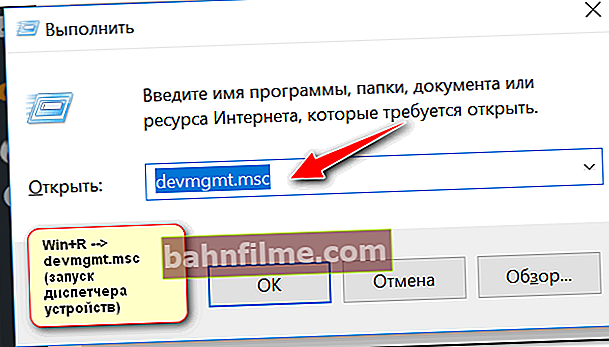
Launching Device Manager - devmgmt.msc
Next, you should find the "Bluetooth" tab and open it. There must be one device among the devices, the name of which contains the word "adapter" (either "adapter", or "Bluetooth radio ...", or "Broadcom Bluetooth ...") - you need to open its properties.
Note: sometimes in the name of the adapter you can immediately see the Bluetooth version (see the screenshot below, this is exactly the case ...).

Bluetooth adapter properties
After go to the "Advanced" tab, there should be a line with a number LMP... In my example below LMP 8.56425 (in general, you only need to remember the first digit "8").

LMP 8.x - Advanced Tab
Further, see the simple list below (each LMP number has a version next to it):
- LMP 3.x - Bluetooth 2.0 + EDR;
- LMP 4.x - Bluetooth 2.1 + EDR;
- LMP 5.x - Bluetooth 3.0 + HS;
- LMP 6.x - Bluetooth 4.0;
- LMP 7.x - Bluetooth 4.1;
- LMP 8.x - Bluetooth 4.2;
- LMP 9.x - Bluetooth 5.0.
Headphones
To find out which version of the protocol the headphones support - as a rule, it is enough to look at their tech. characteristics (shown on their packaging).

Features of wireless headphones
If the packaging has been lost for a long time, pay attention to the case of the headphones (you can often find out their model and name on it). And knowing the model, it will not be difficult to find those of them. characteristics (unless, of course, we are talking about little-known Chinese brands).
By the way, if the model of the headphones is not indicated on the case, try opening the control panel, the tab "Hardware and Sound / Sound" (see example below).

Hardware and Sound - Sound
In the tab "Playback" , usually, you can find out the information and connected devices (including the model of the headphones). See example below.

Headphone model
*
Difference between different Bluetooth versions
An important point!
Do not forget that the Bluetooth device itself does not work, at least you have two devices that are paired using this protocol, for example, a phone and headphones.
And if your phone supports Bluetooth 4.2, and the headphones are 2.1 + EDR, the connection will be 2.1 + (note: the lowest available version is always selected).
Now about what versions of Bluetooth exist, and what you can find now ...
1) Bluetooth 1.0, 1.1, 1.2 - the first versions of the protocol appeared in 1994. Today, finding one of those devices is almost impossible.
2) Bluetooth 2.0 + EDR - updated version of the protocol, dated 2004. Compared to the first versions, power consumption has been significantly reduced and the operating speed has slightly increased. You can still find it in old and inexpensive headphones and headsets.
3) Bluetooth 2.1 and Bluetooth 2.1 + EDR - a newer version of the protocol (from 2007). NFC support has appeared, power consumption has been reduced by 5-10 times, device pairing has been accelerated.
4) Bluetooth 3.0 + HS - update from 2009. The data transfer rate was significantly increased (up to 1 Mbit / s). True, along with this, power consumption has seriously increased, so this version has not become as popular (as the previous ones).
5) Bluetooth 4.0 - 2010 update. Power consumption has been reduced, files can now be transferred, the speed remains the same - 1 Mbit / s. Bluetooth adapters of this version can still be found in laptops and phones. Quite a lot of headsets have also been released.
6) Bluetooth 4.1 - elimination of cross-talk while working with LTE-modules, which are in all 4G smartphones (2013);
7) Bluetooth 4.2 - the stability and speed of data transfer has been slightly increased, protection, privacy has been improved, the distance at which devices can work (up to 60 meters) has been increased. The most commonly used protocol today, is used everywhere: headphones, mice, players, laptops, etc.
8) Bluetooth 5.0 - a new protocol from 2017. The speed (up to 2 Mbps) and the distance at which devices can operate (up to 240 meters) have been increased. It is found only in new and expensive gadgets: phones, laptops, etc.
9) Bluetooth 5.1 - the developers promise to release a new version very soon. The main innovation is the determination of the location of devices.
Is it worth chasing a newer version of Bluetooth
In general, the newer the Bluetooth version, the faster, more stable and better the connection, the clearer the sound (if you use wireless headphones), the less power consumption of the device (which means it will work longer without recharging).
In addition, the new version of Bluetooth 5.0 (for example) allows devices to work at a significantly greater distance. This can be very useful if you are out in the country somewhere.
As for the sound quality ...
If we talk about wireless headphones, then not only the version of the Bluetooth protocol they support, but also the codec that compresses the signal can have a great importance on the sound.
The bottom line is this: the audio player does not directly transmit audio via Bluetooth MP3 to the headphone speakers. First, the music being played is compressed, then it is transmitted via the Bluetooth protocol to the headphone adapter - after that the signal is decoded and only then fed to the speakers. Of course, different headphones, audio players support different codec formats (which affects the sound quality).
One of the best codecs providing very high quality sound is the technology aptX ... In order for you to notice the operation of this technology, both the headphones and the player (gadget) with which you pair them must support it. Note that this pleasure is not the cheapest yet ...
*
That's all for now. Good luck!
✌
